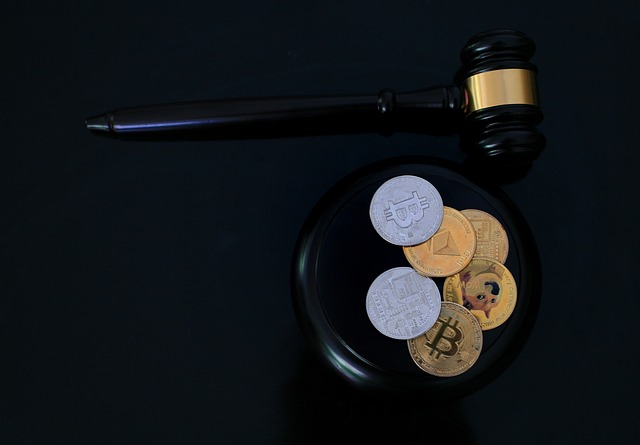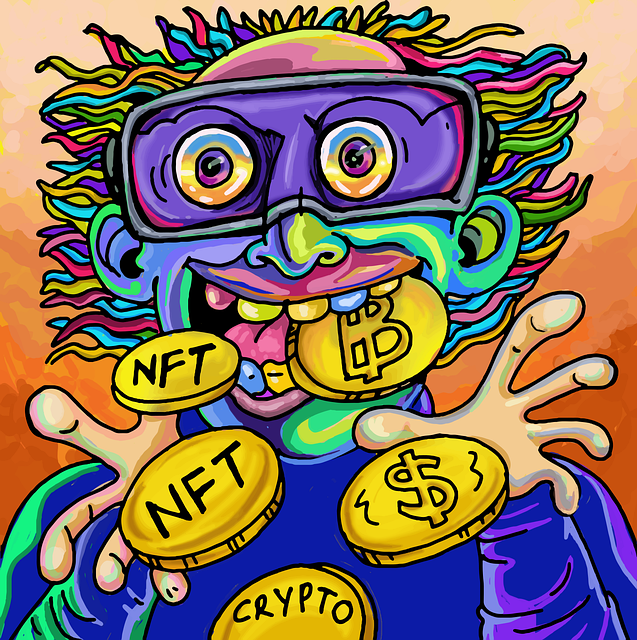Setting up a secure crypto wallet is crucial for protecting digital assets like Bitcoin and Ethereum, serving as a digital safe with varying security and accessibility levels. The process involves selecting between hot (online) and cold (offline) wallets, enabling multi-factor authentication, updating software, and backing up keys. Beginners should opt for user-friendly software wallets like MetaMask or Trust Wallet, following steps including downloading, creating passwords, generating seed phrases, connecting to blockchain networks, and testing transactions. Regular updates, backups in secure physical locations, and following best practices are essential for optimal protection.
In the ever-evolving landscape of cryptocurrency, securing your digital assets is paramount. This comprehensive guide delves into the art of setting up and maintaining a secure crypto wallet, your digital safekeeper. We explore understanding the intricacies of crypto wallets, implementing robust security measures, and providing a step-by-step guide for optimal setup. Discover best practices to safeguard your crypto investments and ensure peace of mind in today’s digital era. Learn how to set up a secure crypto wallet and revolutionize your digital asset management.
- Understanding Crypto Wallets: The Digital Safekeepers
- Security Measures: Protecting Your Digital Assets
- Setting Up Your Wallet: A Step-by-Step Guide
- Best Practices for Maintaining a Secure Crypto Wallet
Understanding Crypto Wallets: The Digital Safekeepers

In the realm of cryptocurrency, understanding and utilizing crypto wallets is paramount for a secure digital journey. A crypto wallet serves as a digital safe-keeper, facilitating the storage, sending, and receiving of cryptocurrencies like Bitcoin or Ethereum. When you Set up a secure crypto wallet, you gain control over your private keys, which act as passwords to access your funds, ensuring no one else can authorise transactions without your consent.
These wallets exist in various forms, from software applications on your computer or smartphone to hardware devices that offer offline storage. Each type offers different levels of security and accessibility. Choosing the right wallet depends on factors like desired security, ease of use, and the frequency of transactions. A secure crypto wallet setup is not just about protecting your funds; it’s also about safeguarding your private keys from loss or theft, making it a crucial step for any crypto enthusiast.
Security Measures: Protecting Your Digital Assets

In today’s digital landscape, protecting your digital assets is paramount. One of the most effective security measures you can take is to Set up a secure crypto wallet. This serves as a fortified vault for your cryptocurrencies, ensuring that your funds are safe from unauthorized access. A robust crypto wallet utilizes advanced encryption protocols and secure storage methods to safeguard your private keys and transactions.
Moreover, integrating multi-factor authentication adds an extra layer of protection. By requiring multiple forms of verification before granting access, you significantly reduce the risk of unauthorized entry. Regularly updating your wallet’s security features and keeping yourself informed about emerging threats is equally crucial. With these measures in place, you can have peace of mind knowing that your digital assets are as secure as possible.
Setting Up Your Wallet: A Step-by-Step Guide

Starting your crypto journey begins with setting up a secure crypto wallet. Here’s a simple, step-by-step guide to help you through the process:
1. Choose Your Wallet Type: Decide between hot wallets (online, offering quick access but lower security) and cold wallets (offline, like hardware wallets, providing maximum security). For beginners, a software wallet like MetaMask or Trust Wallet is often recommended due to their user-friendly interfaces and robust security features.
2. Download & Install: Visit the official website of your chosen wallet and download the application for your device. Once installed, create a secure password and enable two-factor authentication (2FA) for an extra layer of protection. This ensures that even if someone gains access to your login credentials, they still can’t access your funds without the second factor.
3. Generate Your Seed Phrase: After setting up your wallet, you’ll be prompted to create or import a seed phrase. The seed phrase is a series of words that acts as your unique backup key. Make sure to write it down securely and store it in a safe location. Never share this phrase with anyone under any circumstances.
4. Connect to Networks: Configure your wallet to connect to the blockchain networks you’ll be interacting with, such as Ethereum (for ERC-20 tokens) or Bitcoin. This step allows your wallet to interact with smart contracts and perform transactions on the respective blockchains.
5. Test Transactions: Before moving funds, test a small transaction to ensure everything is working correctly. This not only helps you confirm your wallet’s functionality but also lets you understand the associated fees and estimated times of completion for future transactions.
Best Practices for Maintaining a Secure Crypto Wallet

When setting up a secure crypto wallet, the first step is choosing a reputable provider that offers robust security features such as multi-signature authentication and cold storage options. This ensures that your digital assets are protected against potential online threats. Additionally, enable two-factor authentication (2FA) for an extra layer of security to prevent unauthorized access.
Regular updates and backups are crucial best practices to maintain a secure crypto wallet. Keep your software up to date to patch any vulnerabilities while regularly backing up your wallet data offline ensures that even if your device is compromised, your funds remain accessible. Remember to store your backup copies in safe, physical locations away from your main device for maximum protection.
In conclusion, understanding and setting up a secure crypto wallet is paramount for safeguarding your digital assets. By implementing robust security measures and adhering to best practices, you can ensure the protection of your cryptocurrencies. Remember that a well-configured wallet is your first line of defense against potential threats, so take the time to follow our step-by-step guide and maintain a secure digital environment.
